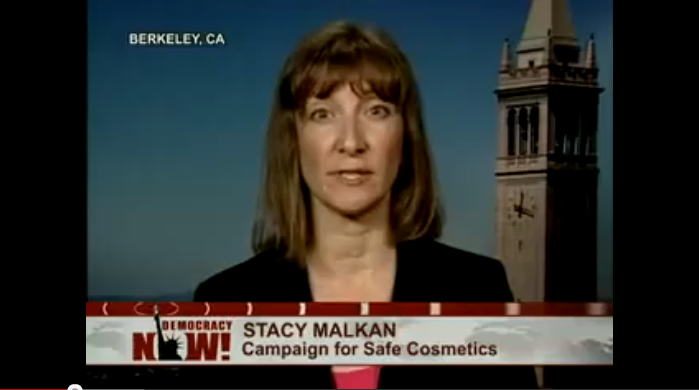
With the introduction of the Safe Cosmetics Act of 2010-a bill that would give the FDA authority to ensure personal-care products are free of harmful ingredients-debate is again raging between concerned citizens and activist organizations and companies in the beauty industry.
Stacy Malkan, co-founder of the Campaign for Safe Cosmetics, has long been outspoken about the need for stricter regulations in the personal-care industry. In a recent article, she elaborates on the common arguments she hears from the beauty industry, and why these arguments just aren’t convincing enough to justify questionable ingredients in products. Here’s a quick summary:
1. A little bit won’t hurt. According to Stacy, representatives of the beauty industry have compared potentially hazardous chemicals to salt-a lot can be dangerous, but a little won’t hurt you. Stacy counters by saying the two are not at all alike. 1,4-dioxane, for example-which contaminates children’s bath products and has been linked to cancer-is often the result of other ingredients mixing together and reacting, to create something potentially dangerous. There’s no confusion that this sort of chemical could ever be “good for you” like salt.
2. Under certain conditions, exposure is minimal. Beauty industry representatives have compared some chemicals to caged tigers, asserting that they may be inherently toxic, but if used under certain conditions, they present no risk. Similar to the “a little won’t hurt” argument, this idea says that if you use the product as directed, and ignore the fact that exposure is difficult to determine-especially since we all use a myriad of products every day-there’s no harm. Again, we have no studies showing this to be the case. To the contrary, small studies are raising alarm as to the effects of long-term and repeated exposure to chemicals in cosmetic products.
3. The potency is low. Another argument is that the potency of parabens in products such as deodorants is a million times lower than in birth control. This seems like beating a dead horse-the same argument of “a little won’t hurt”-presented in a slightly different way. The concentration of parabens in any product is unknown, as companies aren’t required to disclose it on the label. And again, our total exposure is unknown, since parabens-hormone-altering preservatives-exist in a host of personal care products used by people every day.
4. Only kids under 12 should be concerned about lead. The Campaign for Safe Cosmetics reported awhile back that several popular lipsticks contained traces of lead. The industry responded that since only adults use lipstick (not necessarily true), the dangers were minimal, as lead is most dangerous for children. Stacy counters with the fact that women bear children, and often use lipstick while they’re pregnant.
5. The FDA is taking care of it. A common argument, many in the industry come back to the idea that the laws we have are already good enough to protect the public. Stacy counters that the FDA has to authority to require companies to test their ingredients for safety, and no power to require recalls of unsafe products. According to the FDA, cosmetics are the least regulated products available.
Bottom line: Do we want to leave it up to the beauty industry to decide what’s best for us, or would we rather have organizations like the FDA-who aren’t interested in making profits from these products-regulate what’s in them?
What do you think about this ongoing debate? Please let us know.

